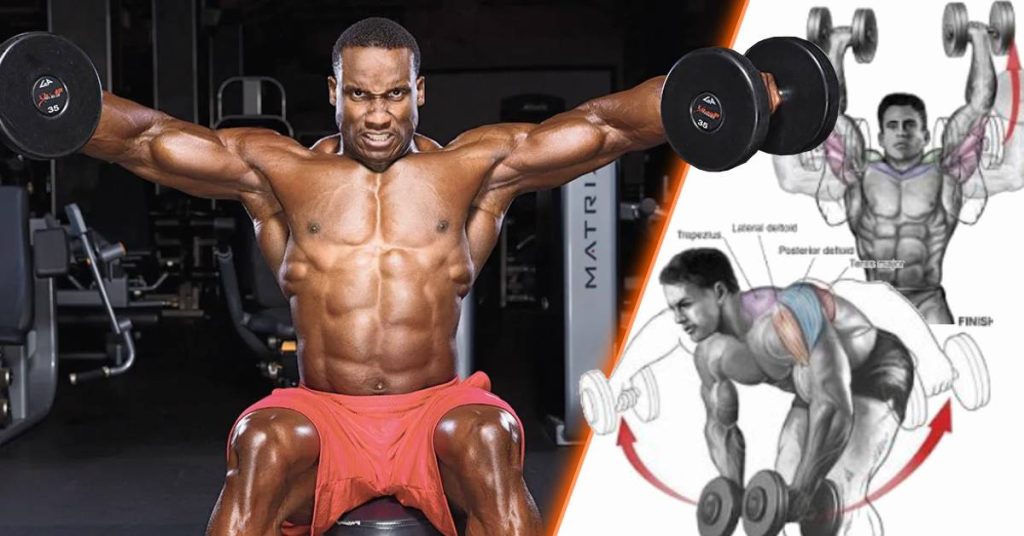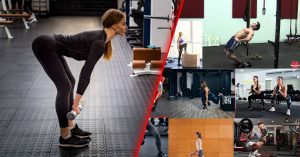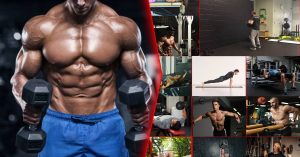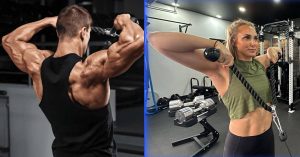Dream of shoulders so powerful they turn heads? The key to that lies in building impressive shoulders, and dumbbells are your secret weapon. Their versatility, stability, and muscle-activating magic make them the perfect tool to sculpt boulder shoulders that’ll leave everyone in awe.
In this article we will take you through the best shoulder exercises with dumbbells and everything you need to know about them. So, let’s dive in.
Table of contents
MORE keyboard_double_arrow_down LESS keyboard_double_arrow_up
Why Should You Do Dumbbell Shoulder Exercises?
Broad shoulders build an athletic physique and have practical benefits. Whether throwing a ball, pulling heavy objects, or pushing open doors, strong shoulders make daily tasks easier. Exercise your shoulders the right way. While any equipment works, dumbbells offer unique advantages:
- Dumbbells move differently than machines, reaching more muscle fibers in your shoulders. They also let you work each side separately, fixing strength imbalances.
- Dumbbells challenge your core and stabilizer muscles more than fixed machines. This strengthens supporting muscles, boosting shoulder stability and balance.
- From lifting groceries to reaching high shelves, strong shoulders make everyday activities less strenuous.
- Dumbbell exercises strengthen the muscles around your shoulder joint, preventing common injuries like rotator cuff tears. Think of your shoulders as a fortified castle, ready for action.
- With endless exercises and compact storage, dumbbells are the ultimate workout accessory.
Furthermore, take a look at this Instagram post by Sebastian Oreb, a strength training coach where he states how beneficial dumbbells are when it comes to complementing other workouts:
Understanding Shoulder Anatomy
Before diving into sculpting your shoulders, let’s peek beneath the skin to understand your key partner: the deltoid muscle.
This prominent, triangle-shaped muscle dominates your shoulder, playing a crucial role in both movement and stability. It’s like the engine and stabilizer of your shoulder joint.
Think of the deltoid as having three parts:
- Front deltoid: Raises your arm forward (think throwing a punch or high-fiving)
- Side deltoids: Lift your arm out to the side (think lateral raises)
- Rear deltoids: Pull your arm backward (think throwing a frisbee)
Each part originates from a different spot on your shoulder and joins forces to form a single tendon that attaches to your upper arm bone. They work together with other muscles (like the rotator cuff) to keep your shoulder stable and controlled during all kinds of movements.
Why’s this knowledge important? Knowing which deltoid helps with which movement lets you target specific areas during your workout. So, when you see “lagging areas” in your shoulders, you can choose exercises that engage the specific part you want to strengthen.
With this understanding, you’re ready to move on to the fun part: sculpting those strong, defined shoulders!
Warm-Up Exercises to Improve Shoulder Mobility
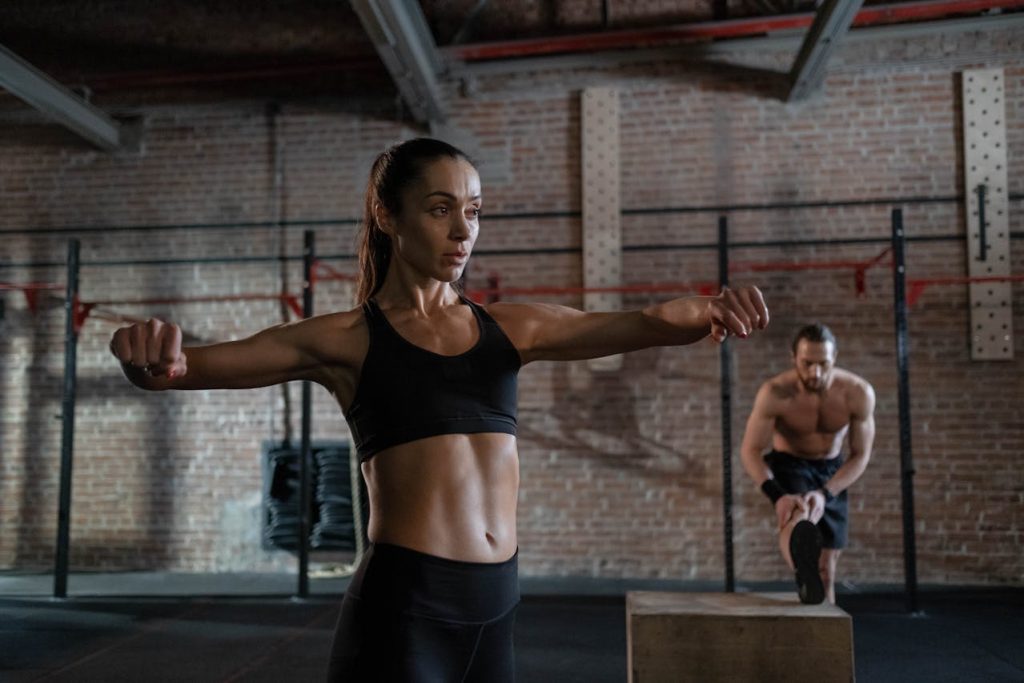
Before you start slinging weight, remember: safety first! The complex, high-mobility shoulder joint needs proper exercise to avoid injury. This quick warm-up routine preps your shoulders for action:
- YTW engages your deltoids, trapezius, rhomboids, and rotator cuff – all key shoulder players. No equipment needed, just do them on the ground, sitting, or standing! They increase scapular stability, setting a strong foundation for heavy lifting.
- The cross-body shoulder stretch is a classic warm-up move for a reason. This simple stretch loosens up your shoulder joints and can be done anywhere. Feel the tension release!
- Alternating chest hugs open up your upper body and back, improving shoulder joint flexibility and range of motion.
- Straight arm circles warm up your shoulder muscles and increase blood flow. Make big circles, then small ones, for a complete warm-up. This easy move can be done anywhere, anytime.
By incorporating these simple exercises into your pre-workout routine, you’ll prime your shoulders for a safe and effective workout.
Choosing The Right Weights
Choosing the right weight is a game of strategy. Go too heavy, and you risk injury; too light, and you shortchange your growth. Dumbbells offer a unique advantage here, allowing for gradual progression that’s both safe and effective
This careful balancing act ensures that every rep, every set, brings you closer to your goals without crossing the line into the danger zone.
So, having both light and heavy sets gives you options for different exercises.
Compound vs. Isolation:
- Compound movements: Use heavier dumbbells for exercises that engage multiple muscle groups, like shoulder presses. Aim for 6-8 or 8-12 reps, challenging yourself without compromising form.
- Isolation exercises: Lighter dumbbells are better for targeting specific muscles, like lateral raises. Go for 12-15 reps to feel the burn while maintaining control.
To find your perfect weight, experiment! Start with a weight you can comfortably lift for the recommended reps with good form. If it feels too easy, increase the weight. If your form suffers, go lighter.
Remember:
- Don’t ego-lift. Choose a weight that allows you to control the movement throughout the entire rep.
- If you feel any pain, stop immediately and consult a healthcare professional.
- Increase weight or reps gradually as you get stronger.
The Best Shoulder Exercises With Dumbbells
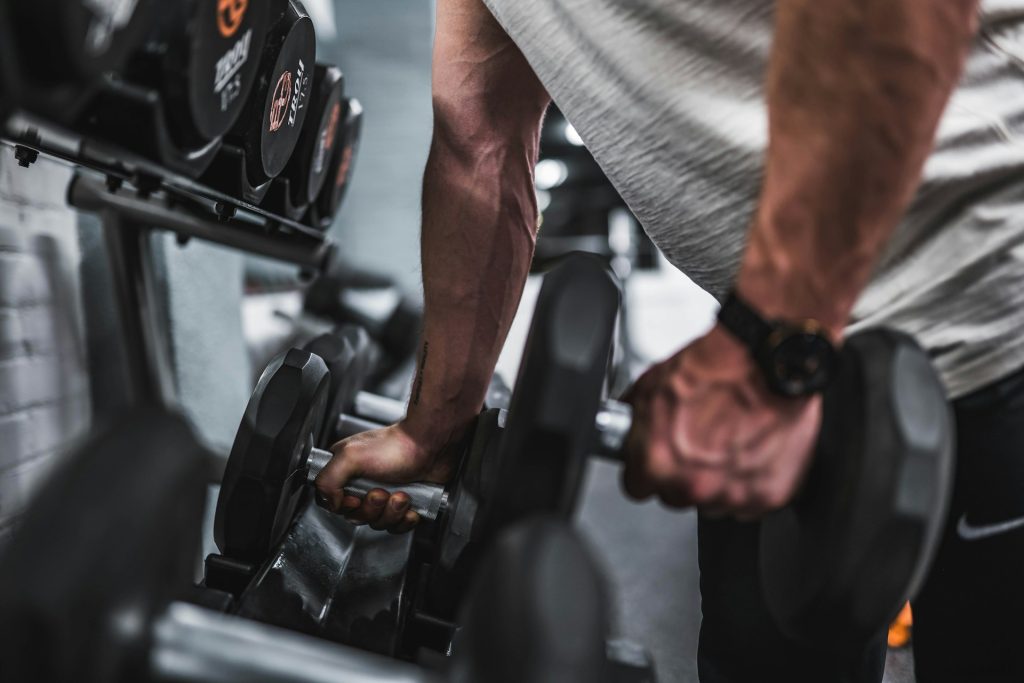
Embarking on a quest to craft the perfect shoulders requires not just determination but also a strategic selection of exercises. Let’s delve into the core workouts that form the bedrock of shoulder development, exploring how to elevate each with a blend of dumbbells, machines, and cables for unmatched results.
1. Dumbbell Shoulder Press
The dumbbell shoulder press isn’t just an exercise; it’s a rite of passage for anyone serious about shoulder development. Targeting the anterior and lateral deltoids, this move is pivotal for building upper body strength and aesthetics.
Here’s how to do it:
1.Stand tall with feet shoulder-width apart, core engaged.
- Grab dumbbells (palms facing out) and raise them to shoulder level with straight arms.
- Exhale as you press the dumbbells straight overhead. Keep your back straight and core tight.
- Hold at the top for a second, feeling the burn in your shoulders.
- Inhale as you slowly lower the weights back to your starting position.
- Do your desired number of reps, feeling strong and powerful with each press.
Remember:
- Choose a weight you can control with perfect form. Heavier isn’t always better!
- Explore seated or incline bench versions for different feels and muscle engagement.
- Listen to your body, avoid pain, and don’t hesitate to ask a trainer for guidance.
2. Dumbbell Upright Row
The dumbbell upright row can be a great exercise for building shoulder and back muscles, but it’s essential to approach it with caution due to potential risks.
Strengths:
- Compound movement: Engaging multiple muscle groups, allowing heavier weights for 8-12 reps.
- Versatility: Adjust grip width to target different areas (delts or traps).
Cautions:
- This exercise can put stress on the shoulder joint, potentially leading to impingement, especially with improper form.
- If you have pre-existing shoulder issues or limited mobility, alternative exercises are safer.
Modified approach for added safety:
- Maintain a straight back and core engagement throughout.
- Start with dumbbells resting at the front of your thighs, palms facing your body.
- Lift the weights by raising your elbows outward and upward, keeping them close to your body. Avoid lifting elbows above shoulder height.
- Concentrate on engaging your deltoids (shoulder muscles) rather than lifting with brute force.
- Stop if you feel any pain or discomfort.
3. Dumbbell Front Raise
This isolation exercise, ideal for lighter weights, helps you truly focus and connect with your front shoulder muscles.
Here is how to do it:
- Pick up dumbbells with palms facing your thighs. Stand tall with good posture, core engaged.
- Slowly raise the dumbbells straight up in front of you. Think “high five the ceiling” with perfect control. Keep your arms mostly straight, but a slight micro-bend is okay.
- Feel the burn in your front shoulders as you reach shoulder height. Imagine your delts doing a happy dance!
- Lower the weights slowly and steadily back to the starting position. Don’t let gravity take over.
- Do your desired reps, staying mindful of form and connection with your front delts.
4. Reverse Dumbbell Fly
Sculpting impressive shoulders requires attention to all deltoid regions, including the often-overlooked rear delts. Here’s why the reverse dumbbell flye is your key to achieving complete shoulder development:
Importance of Rear Delts:
- Well-developed rear delts add thickness and definition to your shoulders.
- Strong rear delts contribute to throwing, pulling, and overall athletic performance.
- They play a crucial role in everyday activities like reaching and lifting.
Mastering the Reverse Dumbbell Flye:
- Hold dumbbells with palms facing each other. Bend at the hips, leaning forward until your chest is nearly parallel to the ground. Let your arms hang naturally with a slight elbow bend.
- Engage your rear delts as you raise the dumbbells out to the sides, maintaining a wide arc motion. Imagine drawing a wide “W” in the air with your arms.
- Squeeze your rear delts at the top of the movement, briefly holding for a second to maximize muscle engagement.
- Slowly lower the weights back to the starting position with control. Focus on feeling the rear delts working throughout the entire movement.
- Choose a weight that allows you to maintain good form for 8-12 repetitions.
5. Dumbbell Side Lateral Raise
Want defined, sculpted shoulders with impressive width? The dumbbell lateral raise is your go-to exercise! This isolation move targets the side delts (shoulder muscles) for increased stability and size, adding that wow factor to your physique.
Here’s how to do it:
- Grab dumbbells with palms facing your thighs. Stand tall with good posture, core engaged.
- Raise the dumbbells slowly and steadily out to your sides, reaching shoulder height. Think “high five yourself,” focusing on feeling the side delts work.
- Hold at the top for a second, squeezing your side delts for maximum muscle engagement. Feel the burn!
- Don’t let gravity win! Lower the weights slowly and with control back to the starting position.
- Do your desired reps (think 10-15 for lighter weights) while maintaining perfect form.
6. Dumbbell Shrugs
While shoulders steal the spotlight, a truly impressive physique needs strong, defined traps too. Enter the dumbbell shrug, a simple yet effective exercise that sculpts your upper traps for a fuller neck and back.
Here is how to do it:
- Pick up dumbbells with palms facing your body. Stand tall with good posture, core engaged. Relax your elbows slightly.
- Imagine your shoulders are mountains rising! Shrug them straight up towards your ears, squeezing your traps at the top. Hold for a second, feeling the burn.
- C Slowly lower the weights back down, maintaining tension in your traps. Remember, control is key.
- Do 3 sets of 8-12 reps, focusing on proper form over heavier weights.
Incorporating Dumbbell Shoulder Workouts Into Your Routine
Now that you have a good idea of the best shoulders exercises with dumbbells, let’s take a look at how you can incorporate them into your routine:
- Create a Balanced Schedule: Alternate between focusing on upper and lower body, ensuring your shoulders receive the attention they need without overtraining.
- Diversify Your Workouts: Rotate exercises regularly to challenge your muscles in new ways, promoting growth and preventing boredom.
- Embrace Full-Body Workouts: Incorporate shoulder exercises into full-body sessions to maintain a harmonious development across all muscle groups.
By mixing different training modalities, you not only maximize muscle engagement but also keep your workouts fresh and exciting. But what’s the best way to start, and how can you ensure you’re making progress without risking injury?
How to Prevent Injuries
The journey toward sculpted shoulders can be as perilous as it is rewarding. To navigate this path safely:
- Begin every workout with dynamic stretches and light exercises to prepare your muscles and joints.
- Adjust the intensity of your workouts based on how you feel, avoiding the temptation to push through pain.
- Ensure you’re giving your body enough downtime to heal and strengthen after each session.
Conclusion
The path to crafting boulder shoulders is indeed complex, blending various exercises and equipment to hit every muscle group effectively. This journey demands not just physical exertion but a strategic mindset, open to adapting and experimenting with different methods.
As you embark on this quest, remember that the diversity of your training regimen is what will ultimately sculpt your shoulders into the powerful symbols of strength they’re meant to be.
Are you prepared to embrace this challenge, push beyond your limits, and achieve the shoulder development you’ve always envisioned? The journey begins now, with each lift, press, and row a step closer to your goal.
Key Points
- They offer versatility and ensure muscle balance by allowing unilateral training, which corrects imbalances and enhances joint stability.
- Integrating dumbbell exercises with a shoulder workout machine and shoulder workout cable machine provides a comprehensive approach to shoulder development, targeting all parts of the deltoid muscle effectively.
- Knowing the function and location of the anterior, lateral, and posterior deltoid heads is crucial for designing a balanced shoulder workout that promotes symmetrical growth.
- Dynamic warm-up exercises are crucial for preparing the shoulders for a workout, reducing the risk of injury, and improving overall mobility and performance.
- Starting with lighter weights for isolation exercises and gradually increasing the load is essential for safe and effective training, with machines allowing for precise adjustments.
- The dumbbell shoulder press, upright row, front raise, reverse fly, lateral raise, and shrugs are fundamental exercises for building shoulder strength and size.
- Warm-ups, listening to your body, and allowing adequate rest are key strategies for preventing injuries during shoulder training.
FAQs
What Is the Most Effective Shoulder Exercise?
The barbell overhead press stands out as the foundational exercise for shoulder development. Its effectiveness comes from the ability to progressively overload, allowing for the use of heavier weights over time, which is crucial for building shoulder muscle and strength.
How Can I Increase My Shoulder Size?
To increase shoulder size, incorporate a mix of exercises targeting different aspects of the shoulders:
- Shoulder Presses (Military Presses): Essential for overall shoulder development.
- Lateral Raises and Upright Rows: Target the lateral parts of the deltoids.
- Incline Chest Presses and Supine Lateral Raises: Focus on the anterior deltoids.
- Pull-ups, Chin-ups, and Dips: Strengthen the upper back and rear deltoids, providing a balanced shoulder development.
Is 3 Exercises for Shoulders Enough?
While three exercises can be effective, especially for beginners, expanding your routine to include 3-4 different exercises per session allows for a more comprehensive shoulder workout. This approach ensures all parts of the shoulder are adequately stimulated, leading to balanced growth and strength.
How Many Sets and Reps Should I Do for Shoulder Exercises?
- Beginners: Aim for two sets of 12-15 reps with two exercises per session. This level of activity builds a solid foundation without overtaxing the muscles.
- More Experienced Trainers: 2-3 sets of 8-12 reps with 3-4 exercises per session. This range is optimal for muscle growth and endurance, adjusting as needed based on your progress and fitness level.
How Do I Get the V Shape?
Achieving a V-shaped torso requires focusing on exercises that widen the shoulders and taper the waist:
- Deadlifts: 3 sets x 4-8 reps
- Bent Over Rows: 3 sets x 6-12 reps
- Chin-ups: 3 sets x 6-12 reps
- Lat Pulldowns: 3 sets x 6-12 reps
- Close Grip Seated Cable Rows: 3 sets x 6-12 reps
- Perform these workouts every 5-7 days, ensuring adequate calorie and protein intake to support muscle growth.
Do Pushups Work Shoulders?
Yes, pushups are an effective exercise for engaging and strengthening the shoulders, in addition to working the triceps, pectoral muscles, and core. Proper form is essential to maximize the benefits of pushups and to strengthen the lower back and abdominal muscles as well.

ABOUT THE AUTHOR
Follow Valen Steven for a dose of fitness enthusiasm, evidence-based advice, and a roadmap to achieving your health and wellness goals.
Subscribe to our Newsletter
Dive into a world of fitness and wellness with our exclusive newsletter! Sign up now and receive weekly power-packs of fitness wisdom

